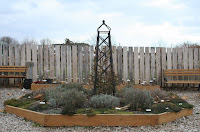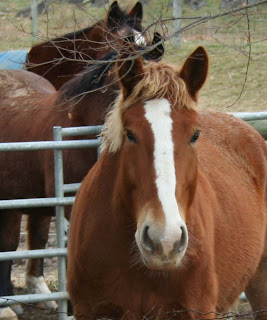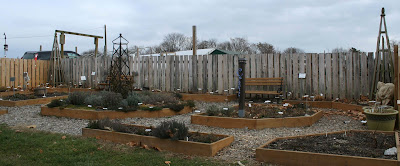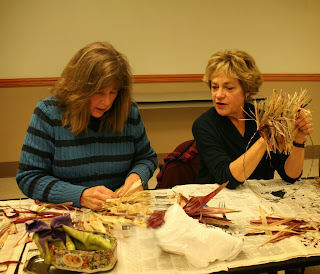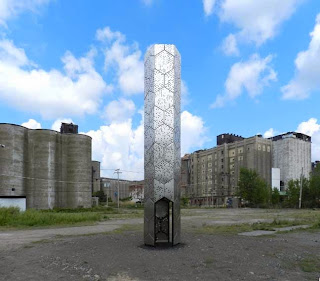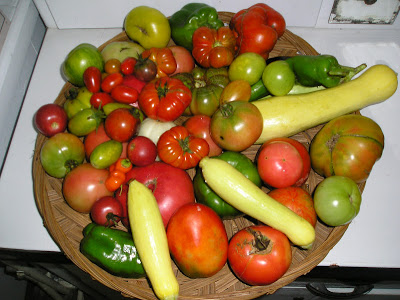
A few years back, I was intrigued by an entry by
Dr. Jeff Gillman of the Garden Professors at their blog, discussing newer varieties of peanuts that made growing them in colder climates more feasible, so it was delightful to learn this spring, that the leaders of our season long Victory Garden team, MG’s Darl Hospelhorn and Linda Horst, decided to experiment with growing them here, just north of the Mason-Dixon line.
Dr. Gillman’s interest stemmed from his years enjoying boiled peanuts when living in Georgia, describing them this way:
One of the foods which I miss the most though — one that hasn’t found its way to Minnesota yet — is the boiled peanut. For those of you who don’t know what a boiled peanut is, it’s a little piece of heaven that has been boiled in a tub of hot salt water for a long time so that, when you break open the peanut’s shell, now the texture of watery cardboard, the seeds inside are soft, warm and, you guessed it, salty.
Always wanting to try a new taste experience, especially one that comes from an equally new growing experience, made me eager to give it a go. Here’s some information from our 2013 Victory Garden experience, with some lessons learned, and what we’ll try to do next year.
First off, Peanuts (
Arachis hypogaea) are a tropical plant in the legume family, meaning they belong to the family of plants that have evolved a way, with help from a naturally occurring bacteria, to fix Nitrogen from the air, like
the clover being researched for including in home lawns.
What we eat are the seeds of the plant, like beans and peas. Peanuts, however, have a fascinatingly unusual growth characteristic; the plant flowers above the ground, but fruits and sets seeds below ground.
After planting when soil temperatures reach about 65 degrees, the peas germinate in about 10 days, and after about 40 days, bright yellow flowers (that look a lot like small pea blossoms) bloom on the lower portion of the plant.
The plant is self-fertile, meaning it pollinates itself, like peas and beans, (and tomatoes, for that matter) do, and the petals drop as the ovary forms. Here’s the fascinating part. According to the
National Peanut Board,
This budding ovary is called a “peg.” The peg enlarges and grows down and away from the plant forming a small stem which extends to the soil. The peanut embryo is in the tip of the peg, which penetrates the soil. The embryo turns horizontal at that point and begins to mature taking the form of a peanut. The plant continues to grow and flower, eventually producing some 40 or more pods. From planting to harvesting, the growing cycle of a peanut takes 4 to 5 months, depending on the type and variety.
Botanists have a term for the above the ground flower, but below the ground fruit and seed set; it's a specialized form of
Geocarpy called
Hysterocarpy.
The Master Gardener
Victory Garden folks planted about 100 seeds (two packets obtained from
Park Seeds) of a variety called
“Virginia Jumbo” after greatly loosening the soil. Next year, we'll look for a source of the boiling varieties recommended by Dr. Gillman, bred for more northern climates,
New Mexico Valencia A, and
HW-136, and we'll start them in the greenhouse to get a few week's jump on the growing season.
Because of the “grow down and then horizontal” aspect of the peg, peanuts do best in soils that are more sandy than typical Franklin County clay, so keep that in mind if you want to try this at home. This was in Mid May.
Here’s where we made an error, mulching our standard way with newspaper, covered with straw along the row to retain moisture and prevent weeds. The straw part is fine, but the newspaper would have interfered with that pesky downward growth thing.

Luckily, Master Gardener Bill Dorman noticed, and having grown peanuts on his family farm (a looong time ago, he quipped) on the Eastern Shore, we were able to pull away the newspapers in time to prevent catastrophe.
Our germination rate was pretty low, getting at most about ½ of our planted seeds to sprout. We’re not sure if this is typical, or we didn’t wait long enough for the soil to warm, or the very wet spring had something to do with it.
The recommendation is to plant about 2-3 inches deep (shallower in clay soils) using about 5 seeds per foot of row. Each row should be about 20 inches apart (we only did one row.)
During the growing season,
Clemson University’s Extension fact sheet for the home grower has this advice about care:
“Water is the most common limiting factor in peanut production. There are three important periods for maintaining adequate moisture with peanuts:
- At planting to encourage germination.
- From 50 to 100 days after planting as the pegs enter the soil and the pod begins to develop. Water is most critical at this time.
- Pod filling about 100 days until harvest.
Avoid wetting the leaves when watering. Stop irrigating 10 days to two weeks before harvest."
We were pretty lucky this year with adequate rainfall during these important times. Calcium is important to the plant, and our
soil test at the beginning of the season showed plenty of calcium available, so no additional supplements were needed, and our pH range was also on target. The recommended pH range is 5.8-6.2 for optimal growing conditions.

Here’s another mistake we made. Boiling peanuts are harvested slightly immature, around 90-100 days after planting, depending on weather and growing conditions. We didn’t know that, and were relying on the leaves to naturally yellow to signal harvest time.
Our last day for the Victory Garden was the end of September and the group decided to leave them in the ground to give them plenty of time to mature. Our harvest then, is probably limited to fully mature ones that are best roasted and then eaten. I’ll have to wait until next year to get an opportunity to experience the joys described by Dr. Gilliam above, remembering to treat them like
“shelly” beans – bean varieties you grow for dry storage, but harvested early, which you then boil and eat in mid to late summer.

A test for maturity for peanuts, again according to
Clemson University, is
“...to scrape the middle or "saddle" of the outside of the pod with a knife. The peanuts can be harvested for roasting when 40 percent of the pods have a dark brown to black color in the scraped area. As peanuts mature, the hull color in this scraped-away saddle area changes from white to yellow, orange to brown, and then to black.”
Boiling peanuts are best harvested when the color is white to yellow.
We harvested the peanuts just this past week (November 13th), probably a little late, but that was the only time travel schedules and other duties permitted the team to get together and dig.
Normally, you’d dig the plants and leave them intact and allow a few weeks to dry in the field before gathering and pulling off the peanuts for further drying and then roasting, or freezing for later roasting. The goal is to reduce their moisture content down to about 10% for maximum storage quality. Since we didn’t have that option, and we forgot to check the instructions, and it was a bit too cold and blustery to be out in the elements digging, the ones we harvested were pulled off the stems and are now drying on newspaper in unheated garages.

They look pretty good, though. At least to this Yankee. And I’m sure we’ll do even better next year.
University of Maryland Master Gardener Erica Smith of the
Grow it Eat it Blog is also a fan of the plant. Read her blog posts
here, and
here.
The Master Gardener
Victory Garden season-long workshop is a community gardening project where up to 25 folks who want to learn from Master Gardeners all about various methods to grow vegetables in home gardens, have the opportunity to learn hands on, how to plan, plant, maintain, and harvest vegetables from their own efforts.
The class meets weekly, starting in late April, and goes until end of harvest time in late September each year. Look for information about the 2014 season in mid March, 2014.




